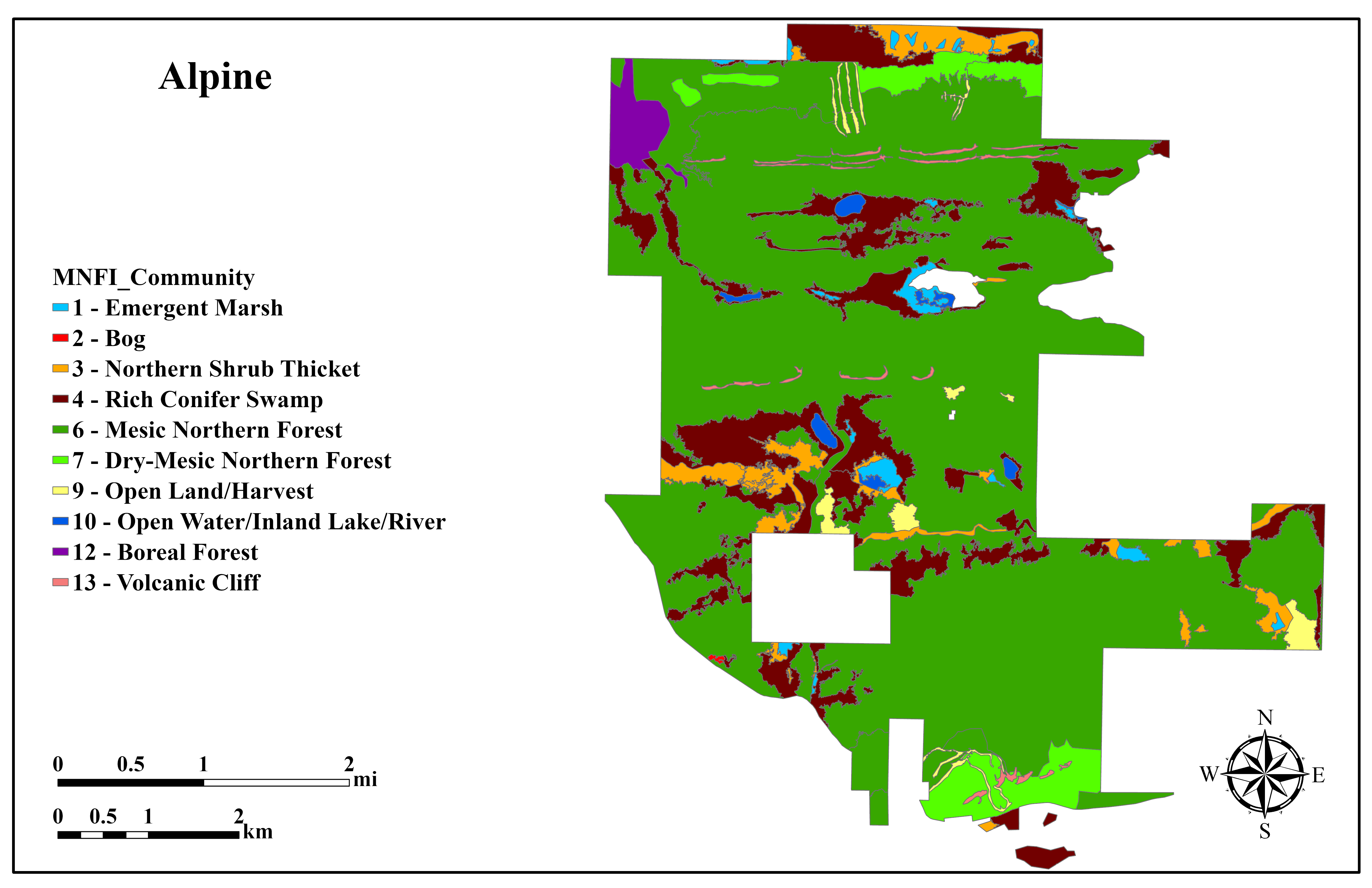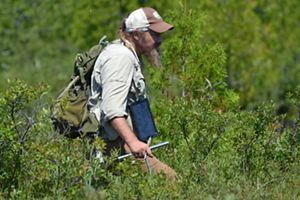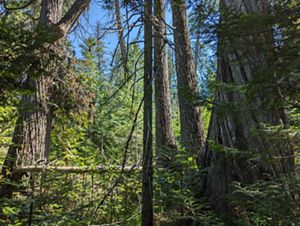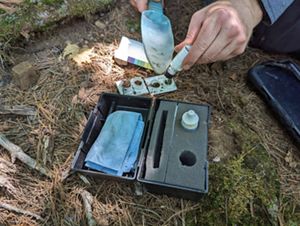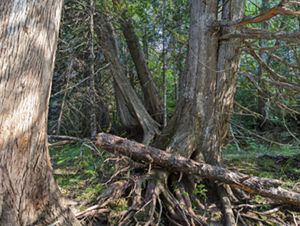[{"title":"From Great Lakes to Great Lakes: African Women Scientists Travel 7,000+ Miles to Share Conservation Strategies to Protect the World’s Fresh Water","description":"Women scientists travel from Africa to the Midwest to conduct research and share their work in the African Great Lakes.","link":"https://stage.nature.org/en-us/about-us/where-we-work/united-states/michigan/stories-in-michigan/great-lakes-african-women-science/","target":"_self","desktopImageCrop":"center-middle","mobileImageCrop":"center-middle","articleDate":"Jun 12, 2024","contentTypeTag":"Feature","geoLocationTag":["Michigan","United States"],"topicTag":["nonprofit partners","partners","conservation work","water conservation","lakes","women in science","science","women and nature"],"placesWeProtectTag":[],"businesstags":["Michigan","United States"],"businesstags_ids":["tnc:business-group/united-states/michigan","tnc:business-group/united-states"],"pageImage":{"small":"https://natureconservancystage-h.assetsadobe.com/is/image/content/dam/tnc/nature/en/photos/2/0/20240515_AWIS.jpg","default":"https://natureconservancystage-h.assetsadobe.com/is/image/content/dam/tnc/nature/en/photos/2/0/20240515_AWIS.jpg","medium2x":"https://natureconservancystage-h.assetsadobe.com/is/image/content/dam/tnc/nature/en/photos/2/0/20240515_AWIS.jpg","large":"https://natureconservancystage-h.assetsadobe.com/is/image/content/dam/tnc/nature/en/photos/2/0/20240515_AWIS.jpg","small2x":"https://natureconservancystage-h.assetsadobe.com/is/image/content/dam/tnc/nature/en/photos/2/0/20240515_AWIS.jpg","medium":"https://natureconservancystage-h.assetsadobe.com/is/image/content/dam/tnc/nature/en/photos/2/0/20240515_AWIS.jpg","large2x":"https://natureconservancystage-h.assetsadobe.com/is/image/content/dam/tnc/nature/en/photos/2/0/20240515_AWIS.jpg"}},{"title":"What’s on the Menu?","description":"Michigan is one of the most agriculturally diverse states in the nation. Farmers across the state are implementing sustainable practices that support the industry and protect our planet.","link":"https://stage.nature.org/en-us/about-us/where-we-work/united-states/michigan/stories-in-michigan/farming-food-saginaw/","target":"_self","desktopImageCrop":"left-top","mobileImageCrop":"left-top","pageImageAlt":"Three people walk through an agriculture field on a sunny day.","readTimeMinutes":"6","articleDate":"Sep 21, 2023","contentTypeTag":"Feature","geoLocationTag":["Michigan","United States"],"topicTag":["agriculture","conservation work","farming","sustainable agriculture","water quality","water conservation"],"placesWeProtectTag":[],"businesstags":["Michigan","United States"],"businesstags_ids":["tnc:business-group/united-states/michigan","tnc:business-group/united-states"],"pageImage":{"small":"https://natureconservancystage-h.assetsadobe.com/is/image/content/dam/tnc/nature/en/photos/MI_KelloggsSagBay_20191008_033.Jpg","default":"https://natureconservancystage-h.assetsadobe.com/is/image/content/dam/tnc/nature/en/photos/MI_KelloggsSagBay_20191008_033.Jpg","medium2x":"https://natureconservancystage-h.assetsadobe.com/is/image/content/dam/tnc/nature/en/photos/MI_KelloggsSagBay_20191008_033.Jpg","large":"https://natureconservancystage-h.assetsadobe.com/is/image/content/dam/tnc/nature/en/photos/MI_KelloggsSagBay_20191008_033.Jpg","small2x":"https://natureconservancystage-h.assetsadobe.com/is/image/content/dam/tnc/nature/en/photos/MI_KelloggsSagBay_20191008_033.Jpg","medium":"https://natureconservancystage-h.assetsadobe.com/is/image/content/dam/tnc/nature/en/photos/MI_KelloggsSagBay_20191008_033.Jpg","large2x":"https://natureconservancystage-h.assetsadobe.com/is/image/content/dam/tnc/nature/en/photos/MI_KelloggsSagBay_20191008_033.Jpg"}},{"title":"Climate Impacts Through the Eyes of Michigan's Wildlife","description":"Explore the impact of climate change through the eyes of Michigan wildlife, and learn about the work being done to support them. ","link":"https://stage.nature.org/en-us/about-us/where-we-work/united-states/michigan/stories-in-michigan/climate/","target":"_self","desktopImageCrop":"center-middle","mobileImageCrop":"center-middle","pageImageAlt":"Outlines of different species of wildlife over a colorful background. ","readTimeMinutes":"8","articleDate":"Sep 06, 2023","contentTypeTag":"Feature","geoLocationTag":["Michigan","United States"],"topicTag":["climate adaptation","climate change","conservation work","forest restoration","habitat restoration","fisheries","wetlands","water conservation","wildlife corridors","wildlife conservation"],"placesWeProtectTag":["Erie Marsh Preserve","Nature Preserves"],"businesstags":["Michigan","United States"],"businesstags_ids":["tnc:business-group/united-states/michigan","tnc:business-group/united-states"],"pageImage":{"small":"https://natureconservancystage-h.assetsadobe.com/is/image/content/dam/tnc/nature/en/graphics/23.08_LeadGenWebHeader-03.png","default":"https://natureconservancystage-h.assetsadobe.com/is/image/content/dam/tnc/nature/en/graphics/23.08_LeadGenWebHeader-03.png","medium2x":"https://natureconservancystage-h.assetsadobe.com/is/image/content/dam/tnc/nature/en/graphics/23.08_LeadGenWebHeader-03.png","large":"https://natureconservancystage-h.assetsadobe.com/is/image/content/dam/tnc/nature/en/graphics/23.08_LeadGenWebHeader-03.png","small2x":"https://natureconservancystage-h.assetsadobe.com/is/image/content/dam/tnc/nature/en/graphics/23.08_LeadGenWebHeader-03.png","medium":"https://natureconservancystage-h.assetsadobe.com/is/image/content/dam/tnc/nature/en/graphics/23.08_LeadGenWebHeader-03.png","large2x":"https://natureconservancystage-h.assetsadobe.com/is/image/content/dam/tnc/nature/en/graphics/23.08_LeadGenWebHeader-03.png"}},{"title":"Protecting Habitat for the Rare Mitchell's Satyr Butterfly","description":"The Nature Conservancy has worked for years to protect the habitat of one of the world's rarest butterflies—the Mitchell's satyr. ","link":"https://stage.nature.org/en-us/about-us/where-we-work/united-states/michigan/stories-in-michigan/mitchells-satyr-butterfly/","target":"_self","desktopImageCrop":"left-top","mobileImageCrop":"left-top","pageImageAlt":"A Mitchell's satyr rests on a coarse fabric in the Grand River Fen Preserve. ","readTimeMinutes":"6","articleDate":"Aug 14, 2023","contentTypeTag":"Feature","geoLocationTag":["Michigan","United States"],"topicTag":["collaboration","conservation work","partners","habitat restoration","habitat restoration","wetlands","water conservation","biodiversity","endangered species","Species","insects","Arthropoda","animals"],"placesWeProtectTag":["Grand River Fen Preserve","Nature Preserves"],"businesstags":["Michigan","United States"],"businesstags_ids":["tnc:business-group/united-states/michigan","tnc:business-group/united-states"],"pageImage":{"small":"https://natureconservancystage-h.assetsadobe.com/is/image/content/dam/tnc/nature/en/photos/m/i/MI_mitchells_satyr.png","default":"https://natureconservancystage-h.assetsadobe.com/is/image/content/dam/tnc/nature/en/photos/m/i/MI_mitchells_satyr.png","medium2x":"https://natureconservancystage-h.assetsadobe.com/is/image/content/dam/tnc/nature/en/photos/m/i/MI_mitchells_satyr.png","large":"https://natureconservancystage-h.assetsadobe.com/is/image/content/dam/tnc/nature/en/photos/m/i/MI_mitchells_satyr.png","small2x":"https://natureconservancystage-h.assetsadobe.com/is/image/content/dam/tnc/nature/en/photos/m/i/MI_mitchells_satyr.png","medium":"https://natureconservancystage-h.assetsadobe.com/is/image/content/dam/tnc/nature/en/photos/m/i/MI_mitchells_satyr.png","large2x":"https://natureconservancystage-h.assetsadobe.com/is/image/content/dam/tnc/nature/en/photos/m/i/MI_mitchells_satyr.png"}},{"title":"10 Questions About Prescribed Fire, Answered","description":"A TNC expert answers commonly asked questions about prescribed fire, also known as a controlled burn, and how it impacts Michigan's ecosystems. ","link":"https://stage.nature.org/en-us/about-us/where-we-work/united-states/michigan/stories-in-michigan/what-is-a-burn-boss/","target":"_self","desktopImageCrop":"left-top","mobileImageCrop":"left-top","pageImageAlt":"Land managers conduct a controlled burn in a Michigan preserve during autumn. ","readTimeMinutes":"5","articleDate":"Jul 17, 2023","articleAuthor":["Bruce Miller"],"contentTypeTag":"Feature","geoLocationTag":["Michigan","United States"],"topicTag":["science","conservation work","wildfires","fire","prescribed fire"],"placesWeProtectTag":["Ives Road Fen Preserve","Nature Preserves","Grand River Fen Preserve"],"businesstags":["Michigan","United States"],"businesstags_ids":["tnc:business-group/united-states/michigan","tnc:business-group/united-states"],"pageImage":{"small":"https://natureconservancystage-h.assetsadobe.com/is/image/content/dam/tnc/nature/en/photos/m/i/MI_Fire_Lerdal.jpg","default":"https://natureconservancystage-h.assetsadobe.com/is/image/content/dam/tnc/nature/en/photos/m/i/MI_Fire_Lerdal.jpg","medium2x":"https://natureconservancystage-h.assetsadobe.com/is/image/content/dam/tnc/nature/en/photos/m/i/MI_Fire_Lerdal.jpg","large":"https://natureconservancystage-h.assetsadobe.com/is/image/content/dam/tnc/nature/en/photos/m/i/MI_Fire_Lerdal.jpg","small2x":"https://natureconservancystage-h.assetsadobe.com/is/image/content/dam/tnc/nature/en/photos/m/i/MI_Fire_Lerdal.jpg","medium":"https://natureconservancystage-h.assetsadobe.com/is/image/content/dam/tnc/nature/en/photos/m/i/MI_Fire_Lerdal.jpg","large2x":"https://natureconservancystage-h.assetsadobe.com/is/image/content/dam/tnc/nature/en/photos/m/i/MI_Fire_Lerdal.jpg"}},{"title":"Michigan Invasive Species","description":"Learn how TNC is addressing invasive species, like glossy buckthorn, at the Ives Road Fen Preserve just south of Tecumseh, Michigan. ","link":"https://stage.nature.org/en-us/about-us/where-we-work/united-states/michigan/stories-in-michigan/invasive-species/","target":"_self","desktopImageCrop":"center-middle","mobileImageCrop":"center-middle","pageImageAlt":"Three people stand in Ives Road Fen Preserve on an early morning. The sun reflects off of mist in the fen, giving the area a glow.","articleDate":"May 01, 2023","contentTypeTag":"Feature","geoLocationTag":["Michigan","United States"],"topicTag":["habitat restoration","conservation work","invasive removal","volunteering","activities","Invasive plants","invasive species","Species","plants"],"placesWeProtectTag":["Ives Road Fen Preserve","Nature Preserves"],"businesstags":["Michigan","United States"],"businesstags_ids":["tnc:business-group/united-states/michigan","tnc:business-group/united-states"],"pageImage":{"small":"https://natureconservancystage-h.assetsadobe.com/is/image/content/dam/tnc/nature/en/photos/m/i/MI_IvesRoadFen_Workday.png?crop=0%2C0%2C2016%2C1512&wid=300&hei=225&scl=6.72","default":"https://natureconservancystage-h.assetsadobe.com/is/image/content/dam/tnc/nature/en/photos/m/i/MI_IvesRoadFen_Workday.png?crop=0%2C0%2C2016%2C1512&wid=300&hei=225&scl=6.72","medium2x":"https://natureconservancystage-h.assetsadobe.com/is/image/content/dam/tnc/nature/en/photos/m/i/MI_IvesRoadFen_Workday.png?crop=0%2C0%2C2016%2C1512&wid=600&hei=450&scl=3.36","large":"https://natureconservancystage-h.assetsadobe.com/is/image/content/dam/tnc/nature/en/photos/m/i/MI_IvesRoadFen_Workday.png?crop=0%2C0%2C2016%2C1512&wid=300&hei=225&scl=6.72","small2x":"https://natureconservancystage-h.assetsadobe.com/is/image/content/dam/tnc/nature/en/photos/m/i/MI_IvesRoadFen_Workday.png?crop=0%2C0%2C2016%2C1512&wid=600&hei=450&scl=3.36","medium":"https://natureconservancystage-h.assetsadobe.com/is/image/content/dam/tnc/nature/en/photos/m/i/MI_IvesRoadFen_Workday.png?crop=0%2C0%2C2016%2C1512&wid=300&hei=225&scl=6.72","large2x":"https://natureconservancystage-h.assetsadobe.com/is/image/content/dam/tnc/nature/en/photos/m/i/MI_IvesRoadFen_Workday.png?crop=0%2C84%2C2016%2C1344&wid=600&hei=400&scl=3.36"}},{"title":"The Places that Protect Michigan’s Biodiversity","description":"TNC is protecting important habitats that provide food and shelter for endangered or threatened species across Michigan.","link":"https://stage.nature.org/en-us/about-us/where-we-work/united-states/michigan/stories-in-michigan/wildlife-diversity/","target":"_self","desktopImageCrop":"right-middle","mobileImageCrop":"right-middle","pageImageAlt":"A piping plover chick walks along a beach in Michigan. ","articleDate":"Mar 08, 2023","contentTypeTag":"Feature","geoLocationTag":["Michigan","United States"],"topicTag":["dunes","coasts","land conservation","conservation work","forest restoration","habitat restoration","lakes","water conservation","birds","animals","Species","invasive species","wetlands restoration","mammals","wildlife watching","outdoor activities","activities","endangered species","wetlands","wildlife conservation","wildlife corridors"],"placesWeProtectTag":["Grand River Fen Preserve","Nature Preserves","Wilderness Lakes Reserve","Zetterberg Preserve at Point Betsie","Paw Paw Prairie Fenn Preserve","Ives Road Fen Preserve"],"businesstags":["Michigan","United States"],"businesstags_ids":["tnc:business-group/united-states/michigan","tnc:business-group/united-states"],"pageImage":{"small":"https://natureconservancystage-h.assetsadobe.com/is/image/content/dam/tnc/nature/en/photos/m/i/MI_MIFO190708_D013.Jpg?crop=368%2C0%2C2950%2C2213&wid=300&hei=225&scl=9.835555555555555","default":"https://natureconservancystage-h.assetsadobe.com/is/image/content/dam/tnc/nature/en/photos/m/i/MI_MIFO190708_D013.Jpg?crop=368%2C0%2C2950%2C2213&wid=300&hei=225&scl=9.835555555555555","medium2x":"https://natureconservancystage-h.assetsadobe.com/is/image/content/dam/tnc/nature/en/photos/m/i/MI_MIFO190708_D013.Jpg?crop=368%2C0%2C2950%2C2213&wid=600&hei=450&scl=4.917777777777777","large":"https://natureconservancystage-h.assetsadobe.com/is/image/content/dam/tnc/nature/en/photos/m/i/MI_MIFO190708_D013.Jpg?crop=368%2C0%2C2950%2C2213&wid=300&hei=225&scl=9.835555555555555","small2x":"https://natureconservancystage-h.assetsadobe.com/is/image/content/dam/tnc/nature/en/photos/m/i/MI_MIFO190708_D013.Jpg?crop=368%2C0%2C2950%2C2213&wid=600&hei=450&scl=4.917777777777777","medium":"https://natureconservancystage-h.assetsadobe.com/is/image/content/dam/tnc/nature/en/photos/m/i/MI_MIFO190708_D013.Jpg?crop=368%2C0%2C2950%2C2213&wid=300&hei=225&scl=9.835555555555555","large2x":"https://natureconservancystage-h.assetsadobe.com/is/image/content/dam/tnc/nature/en/photos/m/i/MI_MIFO190708_D013.Jpg?crop=0%2C0%2C3319%2C2212&wid=600&hei=400&scl=5.531666666666666"}},{"title":"The North Point Peninsula","description":"The largest peninsula on the western side of Lake Huron, North Point offers prime habitat for more than 200 migratory bird species and federally threatened plant species.","link":"https://stage.nature.org/en-us/about-us/where-we-work/united-states/michigan/stories-in-michigan/north-point-peninsula/","target":"_self","desktopImageCrop":"center-middle","mobileImageCrop":"center-middle","pageImageAlt":"View from the shore of the North Point property. The water of Lake Huron is bright blue as is the sky. ","articleDate":"Dec 29, 2022","contentTypeTag":"Feature","geoLocationTag":["Michigan","United States"],"topicTag":["lakes","water conservation","conservation work","partners","birds","animals","Species","nonprofit partners","biodiversity","endangered species","land conservation"],"placesWeProtectTag":[],"businesstags":["Michigan","United States"],"businesstags_ids":["tnc:business-group/united-states/michigan","tnc:business-group/united-states"],"pageImage":{"small":"https://natureconservancystage-h.assetsadobe.com/is/image/content/dam/tnc/nature/en/photos/m/i/MI_MIFO171212_D001.Jpg?crop=431%2C0%2C4314%2C3236&wid=300&hei=225&scl=14.382222222222222","default":"https://natureconservancystage-h.assetsadobe.com/is/image/content/dam/tnc/nature/en/photos/m/i/MI_MIFO171212_D001.Jpg?crop=431%2C0%2C4314%2C3236&wid=300&hei=225&scl=14.382222222222222","medium2x":"https://natureconservancystage-h.assetsadobe.com/is/image/content/dam/tnc/nature/en/photos/m/i/MI_MIFO171212_D001.Jpg?crop=431%2C0%2C4314%2C3236&wid=600&hei=450&scl=7.191111111111111","large":"https://natureconservancystage-h.assetsadobe.com/is/image/content/dam/tnc/nature/en/photos/m/i/MI_MIFO171212_D001.Jpg?crop=431%2C0%2C4314%2C3236&wid=300&hei=225&scl=14.382222222222222","small2x":"https://natureconservancystage-h.assetsadobe.com/is/image/content/dam/tnc/nature/en/photos/m/i/MI_MIFO171212_D001.Jpg?crop=431%2C0%2C4314%2C3236&wid=600&hei=450&scl=7.191111111111111","medium":"https://natureconservancystage-h.assetsadobe.com/is/image/content/dam/tnc/nature/en/photos/m/i/MI_MIFO171212_D001.Jpg?crop=431%2C0%2C4314%2C3236&wid=300&hei=225&scl=14.382222222222222","large2x":"https://natureconservancystage-h.assetsadobe.com/is/image/content/dam/tnc/nature/en/photos/m/i/MI_MIFO171212_D001.Jpg?crop=161%2C0%2C4854%2C3236&wid=600&hei=400&scl=8.09"}},{"title":"Clean Water, Great Beer","description":"Behind every pint poured at one of Michigan's 350+ breweries are the forests and fresh water making it possible.","link":"https://stage.nature.org/en-us/about-us/where-we-work/united-states/michigan/stories-in-michigan/oktoberforest-mi-forests-and-beer/","target":"_self","hideArticleDate":"true","desktopImageCrop":"center-middle","mobileImageCrop":"center-middle","pageImageAlt":"A waterfall runs down a cliff and through a forest of trees in Michigan's Upper Peninsula. The leaves are covered with a myriad of bright colors. ","articleDate":"Sep 16, 2022","contentTypeTag":"Feature","geoLocationTag":["Michigan","United States"],"topicTag":["forest restoration","habitat restoration","conservation work","water conservation","beer","forest conservation","forests","land conservation","water quality"],"placesWeProtectTag":[],"businesstags":["Michigan","United States"],"businesstags_ids":["tnc:business-group/united-states/michigan","tnc:business-group/united-states"],"pageImage":{"small":"https://natureconservancystage-h.assetsadobe.com/is/image/content/dam/tnc/nature/en/photos/d/1/d1f2413abb239838723e4db97a131671_original.Jpg","default":"https://natureconservancystage-h.assetsadobe.com/is/image/content/dam/tnc/nature/en/photos/d/1/d1f2413abb239838723e4db97a131671_original.Jpg","medium2x":"https://natureconservancystage-h.assetsadobe.com/is/image/content/dam/tnc/nature/en/photos/d/1/d1f2413abb239838723e4db97a131671_original.Jpg","large":"https://natureconservancystage-h.assetsadobe.com/is/image/content/dam/tnc/nature/en/photos/d/1/d1f2413abb239838723e4db97a131671_original.Jpg","small2x":"https://natureconservancystage-h.assetsadobe.com/is/image/content/dam/tnc/nature/en/photos/d/1/d1f2413abb239838723e4db97a131671_original.Jpg","medium":"https://natureconservancystage-h.assetsadobe.com/is/image/content/dam/tnc/nature/en/photos/d/1/d1f2413abb239838723e4db97a131671_original.Jpg","large2x":"https://natureconservancystage-h.assetsadobe.com/is/image/content/dam/tnc/nature/en/photos/d/1/d1f2413abb239838723e4db97a131671_original.Jpg"}},{"title":"The Search for Lake Whitefish","description":"Spend a day in the field with TNC Conservation Fellow Alex Verdeja-Perez as she journeys in the rain and snow in search of lake whitefish—a crucial species for the biodiversity of the Great Lakes. ","link":"https://stage.nature.org/en-us/about-us/where-we-work/united-states/michigan/stories-in-michigan/finding-lake-whitefish/","target":"_self","desktopImageCrop":"left-middle","mobileImageCrop":"left-middle","pageImageAlt":"Gust Annis from TNC and Katherine Skubik from Little Traverse Bay Band of Odawa Indians, search for lake whitefish to net on a Michigan river.","articleDate":"Aug 22, 2022","articleAuthor":["Alex Verdeja-Perez "],"contentTypeTag":"Feature","geoLocationTag":["Michigan","United States"],"topicTag":["fisheries","conservation work","government partners","partners","fish","animals","Species","indigenous partners"],"placesWeProtectTag":[],"businesstags":["Michigan","United States"],"businesstags_ids":["tnc:business-group/united-states/michigan","tnc:business-group/united-states"],"pageImage":{"small":"https://natureconservancystage-h.assetsadobe.com/is/image/content/dam/tnc/nature/en/photos/m/i/michigan_whitefish.png","default":"https://natureconservancystage-h.assetsadobe.com/is/image/content/dam/tnc/nature/en/photos/m/i/michigan_whitefish.png","medium2x":"https://natureconservancystage-h.assetsadobe.com/is/image/content/dam/tnc/nature/en/photos/m/i/michigan_whitefish.png","large":"https://natureconservancystage-h.assetsadobe.com/is/image/content/dam/tnc/nature/en/photos/m/i/michigan_whitefish.png","small2x":"https://natureconservancystage-h.assetsadobe.com/is/image/content/dam/tnc/nature/en/photos/m/i/michigan_whitefish.png","medium":"https://natureconservancystage-h.assetsadobe.com/is/image/content/dam/tnc/nature/en/photos/m/i/michigan_whitefish.png","large2x":"https://natureconservancystage-h.assetsadobe.com/is/image/content/dam/tnc/nature/en/photos/m/i/michigan_whitefish.png"}},{"title":"Top Michigan Outdoor Activities","description":"Explore this guide to find the best outdoor activities to add to your Michigan bucket list—no matter what the season. ","link":"https://stage.nature.org/en-us/about-us/where-we-work/united-states/michigan/stories-in-michigan/top-outdoor-activities/","target":"_self","desktopImageCrop":"center-middle","mobileImageCrop":"center-middle","pageImageAlt":"People kayak down a bend of the Two-Hearted River in Michigan. On the left of the river is autumn foliage, and on the right is a sandy shore. ","articleDate":"Jun 23, 2022","contentTypeTag":"Feature","geoLocationTag":["Michigan","United States"],"topicTag":["migration","wildlife conservation","conservation work","hiking","outdoor activities","activities","birding","nonprofit partners","partners","kayaking","boating","wildflowers","native plants","plants","Species","beaches","coasts","land conservation","eco tourism","travel","events","snowshoeing","people and nature","community conservation","canoeing","wildlife watching"],"placesWeProtectTag":["McMahon Lake Preserve","Nature Preserves","Erie Marsh Preserve","Bete Grise Wetlands Preserve","Two Hearted River Forest Reserve","Ross Coastal Plain Marsh Preserve","Mary Macdonald at Horseshoe Harbor Preserve","Carl A Gerstacker Preserve at Dudley Bay","Zetterberg Preserve at Point Betsie","Helmut and Candis Stern Preserve at Mt Baldy","Sharon Hollow Preserve","Maxton Plains Preserve"],"businesstags":["Michigan","United States"],"businesstags_ids":["tnc:business-group/united-states/michigan","tnc:business-group/united-states"],"pageImage":{"small":"https://natureconservancystage-h.assetsadobe.com/is/image/content/dam/tnc/nature/en/photos/MI_TwoHeartedArchive_20211104_001_JPG.jpg?crop=270%2C0%2C4258%2C3194&wid=300&hei=225&scl=14.195555555555556","default":"https://natureconservancystage-h.assetsadobe.com/is/image/content/dam/tnc/nature/en/photos/MI_TwoHeartedArchive_20211104_001_JPG.jpg?crop=270%2C0%2C4258%2C3194&wid=300&hei=225&scl=14.195555555555556","medium2x":"https://natureconservancystage-h.assetsadobe.com/is/image/content/dam/tnc/nature/en/photos/MI_TwoHeartedArchive_20211104_001_JPG.jpg?crop=270%2C0%2C4258%2C3194&wid=600&hei=450&scl=7.097777777777778","large":"https://natureconservancystage-h.assetsadobe.com/is/image/content/dam/tnc/nature/en/photos/MI_TwoHeartedArchive_20211104_001_JPG.jpg?crop=270%2C0%2C4258%2C3194&wid=300&hei=225&scl=14.195555555555556","small2x":"https://natureconservancystage-h.assetsadobe.com/is/image/content/dam/tnc/nature/en/photos/MI_TwoHeartedArchive_20211104_001_JPG.jpg?crop=270%2C0%2C4258%2C3194&wid=600&hei=450&scl=7.097777777777778","medium":"https://natureconservancystage-h.assetsadobe.com/is/image/content/dam/tnc/nature/en/photos/MI_TwoHeartedArchive_20211104_001_JPG.jpg?crop=270%2C0%2C4258%2C3194&wid=300&hei=225&scl=14.195555555555556","large2x":"https://natureconservancystage-h.assetsadobe.com/is/image/content/dam/tnc/nature/en/photos/MI_TwoHeartedArchive_20211104_001_JPG.jpg?crop=4%2C0%2C4791%2C3194&wid=600&hei=400&scl=7.985"}},{"title":"A Tale of Two Flyways","description":"Every year migrating birds road trip across Michigan, but climate and biodiversity threats could make pit stops harder. Associate Director Patrick Doran shares three species and refuges to know.","link":"https://stage.nature.org/en-us/about-us/where-we-work/united-states/michigan/stories-in-michigan/migratory-birds-flyways/","target":"_self","desktopImageCrop":"left-top","mobileImageCrop":"left-top","pageImageAlt":"A group of birds fly low along Lake Huron in Michigan as the sun sets. ","articleDate":"May 19, 2022","articleAuthor":["Patrick Doran"],"contentTypeTag":"Feature","geoLocationTag":["Michigan","United States"],"topicTag":["migration","wildlife conservation","conservation work","birding","outdoor activities","activities","biodiversity","bird guides","climate change","birds","animals","Species"],"placesWeProtectTag":["Wilderness Lakes Reserve","Nature Preserves","Erie Marsh Preserve","Two Hearted River Forest Reserve"],"businesstags":["Michigan","United States"],"businesstags_ids":["tnc:business-group/united-states/michigan","tnc:business-group/united-states"],"pageImage":{"small":"https://natureconservancystage-h.assetsadobe.com/is/image/content/dam/tnc/nature/en/photos/MI_MIFO20181120_D105.Jpg?crop=0%2C0%2C4948%2C3711&wid=300&hei=225&scl=16.493333333333332","default":"https://natureconservancystage-h.assetsadobe.com/is/image/content/dam/tnc/nature/en/photos/MI_MIFO20181120_D105.Jpg?crop=0%2C0%2C4948%2C3711&wid=300&hei=225&scl=16.493333333333332","medium2x":"https://natureconservancystage-h.assetsadobe.com/is/image/content/dam/tnc/nature/en/photos/MI_MIFO20181120_D105.Jpg?crop=0%2C0%2C4948%2C3711&wid=600&hei=450&scl=8.246666666666666","large":"https://natureconservancystage-h.assetsadobe.com/is/image/content/dam/tnc/nature/en/photos/MI_MIFO20181120_D105.Jpg?crop=0%2C0%2C4948%2C3711&wid=300&hei=225&scl=16.493333333333332","small2x":"https://natureconservancystage-h.assetsadobe.com/is/image/content/dam/tnc/nature/en/photos/MI_MIFO20181120_D105.Jpg?crop=0%2C0%2C4948%2C3711&wid=600&hei=450&scl=8.246666666666666","medium":"https://natureconservancystage-h.assetsadobe.com/is/image/content/dam/tnc/nature/en/photos/MI_MIFO20181120_D105.Jpg?crop=0%2C0%2C4948%2C3711&wid=300&hei=225&scl=16.493333333333332","large2x":"https://natureconservancystage-h.assetsadobe.com/is/image/content/dam/tnc/nature/en/photos/MI_MIFO20181120_D105.Jpg?crop=0%2C0%2C5566%2C3710&wid=600&hei=400&scl=9.276666666666667"}},{"title":"The Legacy of the Keweenaw","description":"TNC has been working with partners to ensure the protection of the Keweenaw Peninsula for people and nature since 1982.","link":"https://stage.nature.org/en-us/about-us/where-we-work/united-states/michigan/stories-in-michigan/conservation-in-the-keweenaw/","target":"_self","desktopImageCrop":"center-middle","mobileImageCrop":"center-middle","pageImageAlt":"Aerial view of a rolling green forest in Michigan's Keweenaw Peninsula.","articleDate":"Apr 17, 2022","contentTypeTag":"Feature","geoLocationTag":["Michigan","United States"],"topicTag":["forest conservation","conservation work","lakes","water conservation","conservation education","streams","coasts","land conservation"],"placesWeProtectTag":[],"businesstags":["Michigan","United States"],"businesstags_ids":["tnc:business-group/united-states/michigan","tnc:business-group/united-states"],"pageImage":{"small":"https://natureconservancystage-h.assetsadobe.com/is/image/content/dam/tnc/nature/en/photos/q/u/QuincyAerialPhotography_KeweenawAlpine_6.jpg?crop=376%2C0%2C2248%2C1686&wid=300&hei=225&scl=7.493333333333333","default":"https://natureconservancystage-h.assetsadobe.com/is/image/content/dam/tnc/nature/en/photos/q/u/QuincyAerialPhotography_KeweenawAlpine_6.jpg?crop=376%2C0%2C2248%2C1686&wid=300&hei=225&scl=7.493333333333333","medium2x":"https://natureconservancystage-h.assetsadobe.com/is/image/content/dam/tnc/nature/en/photos/q/u/QuincyAerialPhotography_KeweenawAlpine_6.jpg?crop=376%2C0%2C2248%2C1686&wid=600&hei=450&scl=3.7466666666666666","large":"https://natureconservancystage-h.assetsadobe.com/is/image/content/dam/tnc/nature/en/photos/q/u/QuincyAerialPhotography_KeweenawAlpine_6.jpg?crop=376%2C0%2C2248%2C1686&wid=300&hei=225&scl=7.493333333333333","small2x":"https://natureconservancystage-h.assetsadobe.com/is/image/content/dam/tnc/nature/en/photos/q/u/QuincyAerialPhotography_KeweenawAlpine_6.jpg?crop=376%2C0%2C2248%2C1686&wid=600&hei=450&scl=3.7466666666666666","medium":"https://natureconservancystage-h.assetsadobe.com/is/image/content/dam/tnc/nature/en/photos/q/u/QuincyAerialPhotography_KeweenawAlpine_6.jpg?crop=376%2C0%2C2248%2C1686&wid=300&hei=225&scl=7.493333333333333","large2x":"https://natureconservancystage-h.assetsadobe.com/is/image/content/dam/tnc/nature/en/photos/q/u/QuincyAerialPhotography_KeweenawAlpine_6.jpg?crop=235%2C0%2C2529%2C1686&wid=600&hei=400&scl=4.215"}},{"title":"A Walk Through Michigan’s Wildflowers","description":"Explore this guide for the best places to view Michigan’s diverse plant life and learn about the role each plays in their respective habitats.","link":"https://stage.nature.org/en-us/about-us/where-we-work/united-states/michigan/stories-in-michigan/wildflowers-where-when-to-view/","target":"_self","desktopImageCrop":"left-top","mobileImageCrop":"left-top","pageImageAlt":"The blooms of blazing star standing in a field of green plants and grass at Paw Paw Prairie Fen Preserve, Michigan.","articleDate":"Mar 25, 2022","contentTypeTag":"Photo Essay","geoLocationTag":["Michigan","United States"],"topicTag":["endangered species","Species","biodiversity","conservation work","lakes","water conservation","wildflowers","native plants","plants"],"placesWeProtectTag":["Erie Marsh Preserve","Nature Preserves","Grand River Fen Preserve","Paw Paw Prairie Fenn Preserve","Sharon Hollow Preserve","Carl A Gerstacker Preserve at Dudley Bay","Maxton Plains Preserve","Ives Road Fen Preserve","John Arthur Woollam Preserve","McMahon Lake Preserve","Zetterberg Preserve at Point Betsie","Portage Point Dunes","Echo Lake Preserve"],"businesstags":["Michigan","United States"],"businesstags_ids":["tnc:business-group/united-states/michigan","tnc:business-group/united-states"],"pageImage":{"small":"https://natureconservancystage-h.assetsadobe.com/is/image/content/dam/tnc/nature/en/photos/m/i/MI_MIFO160920_D044_JPG.jpg?crop=0%2C0%2C5120%2C3840&wid=300&hei=225&scl=17.066666666666666","default":"https://natureconservancystage-h.assetsadobe.com/is/image/content/dam/tnc/nature/en/photos/m/i/MI_MIFO160920_D044_JPG.jpg?crop=0%2C0%2C5120%2C3840&wid=300&hei=225&scl=17.066666666666666","medium2x":"https://natureconservancystage-h.assetsadobe.com/is/image/content/dam/tnc/nature/en/photos/m/i/MI_MIFO160920_D044_JPG.jpg?crop=0%2C0%2C5120%2C3840&wid=600&hei=450&scl=8.533333333333333","large":"https://natureconservancystage-h.assetsadobe.com/is/image/content/dam/tnc/nature/en/photos/m/i/MI_MIFO160920_D044_JPG.jpg?crop=0%2C0%2C5120%2C3840&wid=300&hei=225&scl=17.066666666666666","small2x":"https://natureconservancystage-h.assetsadobe.com/is/image/content/dam/tnc/nature/en/photos/m/i/MI_MIFO160920_D044_JPG.jpg?crop=0%2C0%2C5120%2C3840&wid=600&hei=450&scl=8.533333333333333","medium":"https://natureconservancystage-h.assetsadobe.com/is/image/content/dam/tnc/nature/en/photos/m/i/MI_MIFO160920_D044_JPG.jpg?crop=0%2C0%2C5120%2C3840&wid=300&hei=225&scl=17.066666666666666","large2x":"https://natureconservancystage-h.assetsadobe.com/is/image/content/dam/tnc/nature/en/photos/m/i/MI_MIFO160920_D044_JPG.jpg?crop=0%2C0%2C5760%2C3840&wid=600&hei=400&scl=9.6"}},{"title":"Resilient Forests in Michigan","description":"The northern forests of Michigan offer critical habitat for a variety of plants and animals, provide clean air, absorb carbon, filter water and provide year-round recreation and tourism opportunities.","link":"https://stage.nature.org/en-us/about-us/where-we-work/united-states/michigan/stories-in-michigan/resilient-forests/","target":"_self","desktopImageCrop":"center-middle","mobileImageCrop":"center-middle","pageImageAlt":"A view of rolling green forests with Lake Superior in the distance. The sky is blue and full of white clouds. ","articleDate":"Feb 22, 2022","contentTypeTag":"Program Overview","geoLocationTag":["Michigan","United States"],"topicTag":["forest conservation","conservation work","forest restoration","habitat restoration","climate resilience","climate change","carbon"],"placesWeProtectTag":[],"businesstags":["Michigan","United States"],"businesstags_ids":["tnc:business-group/united-states/michigan","tnc:business-group/united-states"],"pageImage":{"small":"https://natureconservancystage-h.assetsadobe.com/is/image/content/dam/tnc/nature/en/photos/m/t/Mt-Baldy-MIFO.jpg?crop=603%2C0%2C3873%2C2905&wid=300&hei=225&scl=12.911111111111111","default":"https://natureconservancystage-h.assetsadobe.com/is/image/content/dam/tnc/nature/en/photos/m/t/Mt-Baldy-MIFO.jpg?crop=603%2C0%2C3873%2C2905&wid=300&hei=225&scl=12.911111111111111","medium2x":"https://natureconservancystage-h.assetsadobe.com/is/image/content/dam/tnc/nature/en/photos/m/t/Mt-Baldy-MIFO.jpg?crop=603%2C0%2C3873%2C2905&wid=600&hei=450&scl=6.455555555555556","large":"https://natureconservancystage-h.assetsadobe.com/is/image/content/dam/tnc/nature/en/photos/m/t/Mt-Baldy-MIFO.jpg?crop=603%2C0%2C3873%2C2905&wid=300&hei=225&scl=12.911111111111111","small2x":"https://natureconservancystage-h.assetsadobe.com/is/image/content/dam/tnc/nature/en/photos/m/t/Mt-Baldy-MIFO.jpg?crop=603%2C0%2C3873%2C2905&wid=600&hei=450&scl=6.455555555555556","medium":"https://natureconservancystage-h.assetsadobe.com/is/image/content/dam/tnc/nature/en/photos/m/t/Mt-Baldy-MIFO.jpg?crop=603%2C0%2C3873%2C2905&wid=300&hei=225&scl=12.911111111111111","large2x":"https://natureconservancystage-h.assetsadobe.com/is/image/content/dam/tnc/nature/en/photos/m/t/Mt-Baldy-MIFO.jpg?crop=361%2C0%2C4357%2C2905&wid=600&hei=400&scl=7.2625"}},{"title":"Great Lakes Fisheries","description":"In the Great Lakes, native fisheries are the foundation of a $7 billion commercial and recreational fishing industry, as well as a living indication of the health of the entire freshwater system. ","link":"https://stage.nature.org/en-us/about-us/where-we-work/priority-landscapes/great-lakes/stories-in-the-great-lakes/great-lakes-fisheries/","target":"_self","desktopImageCrop":"right-middle","mobileImageCrop":"right-middle","pageImageAlt":"A fish swims through blue water along a bed of rocks. ","articleDate":"Feb 22, 2022","contentTypeTag":"Program Overview","geoLocationTag":["Michigan","United States"],"topicTag":["habitat restoration","habitat restoration","conservation work","sustainable fisheries","fisheries","science","fish","animals","Species"],"placesWeProtectTag":["Great Lakes","Landscapes"],"businesstags":["Michigan","United States"],"businesstags_ids":["tnc:business-group/united-states/michigan","tnc:business-group/united-states"],"pageImage":{"small":"https://natureconservancystage-h.assetsadobe.com/is/image/content/dam/tnc/nature/en/photos/m/i/miphotos_47626262.jpg?crop=457%2C0%2C3542%2C2657&wid=300&hei=225&scl=11.80888888888889","default":"https://natureconservancystage-h.assetsadobe.com/is/image/content/dam/tnc/nature/en/photos/m/i/miphotos_47626262.jpg?crop=457%2C0%2C3542%2C2657&wid=300&hei=225&scl=11.80888888888889","medium2x":"https://natureconservancystage-h.assetsadobe.com/is/image/content/dam/tnc/nature/en/photos/m/i/miphotos_47626262.jpg?crop=457%2C0%2C3542%2C2657&wid=600&hei=450&scl=5.904444444444445","large":"https://natureconservancystage-h.assetsadobe.com/is/image/content/dam/tnc/nature/en/photos/m/i/miphotos_47626262.jpg?crop=457%2C0%2C3542%2C2657&wid=300&hei=225&scl=11.80888888888889","small2x":"https://natureconservancystage-h.assetsadobe.com/is/image/content/dam/tnc/nature/en/photos/m/i/miphotos_47626262.jpg?crop=457%2C0%2C3542%2C2657&wid=600&hei=450&scl=5.904444444444445","medium":"https://natureconservancystage-h.assetsadobe.com/is/image/content/dam/tnc/nature/en/photos/m/i/miphotos_47626262.jpg?crop=457%2C0%2C3542%2C2657&wid=300&hei=225&scl=11.80888888888889","large2x":"https://natureconservancystage-h.assetsadobe.com/is/image/content/dam/tnc/nature/en/photos/m/i/miphotos_47626262.jpg?crop=14%2C0%2C3985%2C2657&wid=600&hei=400&scl=6.6425"}},{"title":"Policy Priorities","description":"TNC is working with Michigan's legislature, state and federal agencies, and local partners to find meaningful solutions to ensure that Michigan’s lands and waters remain healthy. ","link":"https://stage.nature.org/en-us/about-us/where-we-work/united-states/michigan/stories-in-michigan/policy-priorities/","target":"_self","desktopImageCrop":"left-middle","mobileImageCrop":"left-middle","pageImageAlt":"The dome of Michigan's statehouse framed by tree branches and a blue sky in Lansing. ","articleDate":"Sep 30, 2021","contentTypeTag":"Program Overview","geoLocationTag":["Michigan","United States"],"topicTag":["climate policy","climate change","conservation work","soil health","agriculture","government partners","partners","policy","renewable energy","energy","water quality","water conservation","green infrastructure","fisheries","legislation","forests","land conservation"],"placesWeProtectTag":[],"businesstags":["Michigan","United States"],"businesstags_ids":["tnc:business-group/united-states/michigan","tnc:business-group/united-states"],"pageImage":{"small":"https://natureconservancystage-h.assetsadobe.com/is/image/content/dam/tnc/nature/en/photos/m/i/MI_MIFO171205_D004.jpg","default":"https://natureconservancystage-h.assetsadobe.com/is/image/content/dam/tnc/nature/en/photos/m/i/MI_MIFO171205_D004.jpg","medium2x":"https://natureconservancystage-h.assetsadobe.com/is/image/content/dam/tnc/nature/en/photos/m/i/MI_MIFO171205_D004.jpg","large":"https://natureconservancystage-h.assetsadobe.com/is/image/content/dam/tnc/nature/en/photos/m/i/MI_MIFO171205_D004.jpg","small2x":"https://natureconservancystage-h.assetsadobe.com/is/image/content/dam/tnc/nature/en/photos/m/i/MI_MIFO171205_D004.jpg","medium":"https://natureconservancystage-h.assetsadobe.com/is/image/content/dam/tnc/nature/en/photos/m/i/MI_MIFO171205_D004.jpg","large2x":"https://natureconservancystage-h.assetsadobe.com/is/image/content/dam/tnc/nature/en/photos/m/i/MI_MIFO171205_D004.jpg"}},{"title":"Protecting Our Land","description":"Learn how TNC is working with partners across Michigan to safeguard entire natural systems and protect Michigan land.","link":"https://stage.nature.org/en-us/about-us/where-we-work/united-states/michigan/stories-in-michigan/protect-land/","target":"_self","desktopImageCrop":"center-middle","mobileImageCrop":"center-middle","pageImageAlt":"Rolling sand dunes and green grass along a lake shore. ","articleDate":"Sep 22, 2021","contentTypeTag":"Program Overview","geoLocationTag":["Michigan","United States"],"topicTag":["land conservation","conservation work"],"placesWeProtectTag":[],"businesstags":["Michigan","United States"],"businesstags_ids":["tnc:business-group/united-states/michigan","tnc:business-group/united-states"],"pageImage":{"small":"https://natureconservancystage-h.assetsadobe.com/is/image/content/dam/tnc/nature/en/photos/m/i/MI_MIFO160904_D536.png?crop=83%2C0%2C1333%2C1000&wid=300&hei=225&scl=4.444444444444445","default":"https://natureconservancystage-h.assetsadobe.com/is/image/content/dam/tnc/nature/en/photos/m/i/MI_MIFO160904_D536.png?crop=83%2C0%2C1333%2C1000&wid=300&hei=225&scl=4.444444444444445","medium2x":"https://natureconservancystage-h.assetsadobe.com/is/image/content/dam/tnc/nature/en/photos/m/i/MI_MIFO160904_D536.png?crop=83%2C0%2C1333%2C1000&wid=600&hei=450&scl=2.2222222222222223","large":"https://natureconservancystage-h.assetsadobe.com/is/image/content/dam/tnc/nature/en/photos/m/i/MI_MIFO160904_D536.png?crop=83%2C0%2C1333%2C1000&wid=300&hei=225&scl=4.444444444444445","small2x":"https://natureconservancystage-h.assetsadobe.com/is/image/content/dam/tnc/nature/en/photos/m/i/MI_MIFO160904_D536.png?crop=83%2C0%2C1333%2C1000&wid=600&hei=450&scl=2.2222222222222223","medium":"https://natureconservancystage-h.assetsadobe.com/is/image/content/dam/tnc/nature/en/photos/m/i/MI_MIFO160904_D536.png?crop=83%2C0%2C1333%2C1000&wid=300&hei=225&scl=4.444444444444445","large2x":"https://natureconservancystage-h.assetsadobe.com/is/image/content/dam/tnc/nature/en/photos/m/i/MI_MIFO160904_D536.png?crop=0%2C0%2C1500%2C1000&wid=600&hei=400&scl=2.5"}},{"title":"Protecting Our Water","description":"Learn how TNC is working to protect the freshwater legacy and future of Michigan's Great Lakes by addressing system-wide issues in the state.","link":"https://stage.nature.org/en-us/about-us/where-we-work/united-states/michigan/stories-in-michigan/protect-water/","target":"_self","desktopImageCrop":"left-middle","mobileImageCrop":"center-middle","pageImageAlt":"The sun sets over the water and a sandy beach. ","articleDate":"Sep 13, 2021","contentTypeTag":"Program Overview","geoLocationTag":["Michigan","United States"],"topicTag":["water conservation","conservation work"],"placesWeProtectTag":[],"businesstags":["Michigan","United States"],"businesstags_ids":["tnc:business-group/united-states/michigan","tnc:business-group/united-states"],"pageImage":{"small":"https://natureconservancystage-h.assetsadobe.com/is/image/content/dam/tnc/nature/en/photos/o/v/OvalBeachSaugatuckMIAugust2017.jpg?crop=93%2C0%2C1413%2C1060&wid=300&hei=225&scl=4.711111111111111","default":"https://natureconservancystage-h.assetsadobe.com/is/image/content/dam/tnc/nature/en/photos/o/v/OvalBeachSaugatuckMIAugust2017.jpg?crop=0%2C0%2C1413%2C1060&wid=300&hei=225&scl=4.711111111111111","medium2x":"https://natureconservancystage-h.assetsadobe.com/is/image/content/dam/tnc/nature/en/photos/o/v/OvalBeachSaugatuckMIAugust2017.jpg?crop=0%2C0%2C1413%2C1060&wid=600&hei=450&scl=2.3555555555555556","large":"https://natureconservancystage-h.assetsadobe.com/is/image/content/dam/tnc/nature/en/photos/o/v/OvalBeachSaugatuckMIAugust2017.jpg?crop=0%2C0%2C1413%2C1060&wid=300&hei=225&scl=4.711111111111111","small2x":"https://natureconservancystage-h.assetsadobe.com/is/image/content/dam/tnc/nature/en/photos/o/v/OvalBeachSaugatuckMIAugust2017.jpg?crop=93%2C0%2C1413%2C1060&wid=600&hei=450&scl=2.3555555555555556","medium":"https://natureconservancystage-h.assetsadobe.com/is/image/content/dam/tnc/nature/en/photos/o/v/OvalBeachSaugatuckMIAugust2017.jpg?crop=0%2C0%2C1413%2C1060&wid=300&hei=225&scl=4.711111111111111","large2x":"https://natureconservancystage-h.assetsadobe.com/is/image/content/dam/tnc/nature/en/photos/o/v/OvalBeachSaugatuckMIAugust2017.jpg?crop=0%2C0%2C1590%2C1060&wid=600&hei=400&scl=2.65"}},{"title":"Forest Restoration in Action","description":"TNC is taking a climate lens to forest restoration across Michigan, looking at where and how conservation action can help forests be more diverse, climate-resilient and disease-resistant. ","link":"https://stage.nature.org/en-us/about-us/where-we-work/united-states/michigan/stories-in-michigan/forest-restoration/","target":"_self","desktopImageCrop":"left-top","mobileImageCrop":"left-top","pageImageAlt":"Mushrooms grow on the Ross Coastal Plain Marsh Preserve.","articleDate":"Sep 06, 2021","contentTypeTag":"Feature","geoLocationTag":["Michigan","United States"],"topicTag":["partners","conservation work","biodiversity","forests","land conservation"],"placesWeProtectTag":["Ross Coastal Plain Marsh Preserve","Nature Preserves","Two Hearted River Forest Reserve"],"businesstags":["Michigan","United States"],"businesstags_ids":["tnc:business-group/united-states/michigan","tnc:business-group/united-states"],"pageImage":{"small":"https://natureconservancystage-h.assetsadobe.com/is/image/content/dam/tnc/nature/en/photos/m/i/MI_MIFO160904_D218.png?crop=0%2C0%2C1333%2C1000&wid=300&hei=225&scl=4.444444444444445","default":"https://natureconservancystage-h.assetsadobe.com/is/image/content/dam/tnc/nature/en/photos/m/i/MI_MIFO160904_D218.png?crop=0%2C0%2C1333%2C1000&wid=300&hei=225&scl=4.444444444444445","medium2x":"https://natureconservancystage-h.assetsadobe.com/is/image/content/dam/tnc/nature/en/photos/m/i/MI_MIFO160904_D218.png?crop=0%2C0%2C1333%2C1000&wid=600&hei=450&scl=2.2222222222222223","large":"https://natureconservancystage-h.assetsadobe.com/is/image/content/dam/tnc/nature/en/photos/m/i/MI_MIFO160904_D218.png?crop=0%2C0%2C1333%2C1000&wid=300&hei=225&scl=4.444444444444445","small2x":"https://natureconservancystage-h.assetsadobe.com/is/image/content/dam/tnc/nature/en/photos/m/i/MI_MIFO160904_D218.png?crop=0%2C0%2C1333%2C1000&wid=600&hei=450&scl=2.2222222222222223","medium":"https://natureconservancystage-h.assetsadobe.com/is/image/content/dam/tnc/nature/en/photos/m/i/MI_MIFO160904_D218.png?crop=0%2C0%2C1333%2C1000&wid=300&hei=225&scl=4.444444444444445","large2x":"https://natureconservancystage-h.assetsadobe.com/is/image/content/dam/tnc/nature/en/photos/m/i/MI_MIFO160904_D218.png?crop=0%2C0%2C1500%2C1000&wid=600&hei=400&scl=2.5"}},{"title":"Michigan Climate Action","description":"The Nature Conservancy is taking action to address the impact of climate change on Michigan and the Great Lakes.","link":"https://stage.nature.org/en-us/about-us/where-we-work/united-states/michigan/stories-in-michigan/climate-change-action/","target":"_self","hideArticleDate":"true","desktopImageCrop":"left-top","mobileImageCrop":"left-top","pageImageAlt":"A river runs through a brightly colored forest of trees on a spring day at Wilderness Lakes Reserve.","articleDate":"Jun 24, 2021","contentTypeTag":"Feature","geoLocationTag":["Michigan","United States"],"topicTag":["climate policy","climate change","conservation work","climate science","science","climate resilience","carbon","climate adaptation","climate mitigation","climate strongholds","natural climate solutions","forest conservation"],"placesWeProtectTag":["Erie Marsh Preserve","Nature Preserves"],"businesstags":["Michigan","United States"],"businesstags_ids":["tnc:business-group/united-states/michigan","tnc:business-group/united-states"],"pageImage":{"small":"https://natureconservancystage-h.assetsadobe.com/is/image/content/dam/tnc/nature/en/photos/other/d/_DSC1838_wilderness.png?crop=0%2C0%2C2668%2C2001&wid=300&hei=225&scl=8.893333333333333","default":"https://natureconservancystage-h.assetsadobe.com/is/image/content/dam/tnc/nature/en/photos/other/d/_DSC1838_wilderness.png?crop=0%2C0%2C2668%2C2001&wid=300&hei=225&scl=8.893333333333333","medium2x":"https://natureconservancystage-h.assetsadobe.com/is/image/content/dam/tnc/nature/en/photos/other/d/_DSC1838_wilderness.png?crop=0%2C0%2C2668%2C2001&wid=600&hei=450&scl=4.446666666666666","large":"https://natureconservancystage-h.assetsadobe.com/is/image/content/dam/tnc/nature/en/photos/other/d/_DSC1838_wilderness.png?crop=0%2C0%2C2668%2C2001&wid=300&hei=225&scl=8.893333333333333","small2x":"https://natureconservancystage-h.assetsadobe.com/is/image/content/dam/tnc/nature/en/photos/other/d/_DSC1838_wilderness.png?crop=0%2C0%2C2668%2C2001&wid=600&hei=450&scl=4.446666666666666","medium":"https://natureconservancystage-h.assetsadobe.com/is/image/content/dam/tnc/nature/en/photos/other/d/_DSC1838_wilderness.png?crop=0%2C0%2C2668%2C2001&wid=300&hei=225&scl=8.893333333333333","large2x":"https://natureconservancystage-h.assetsadobe.com/is/image/content/dam/tnc/nature/en/photos/other/d/_DSC1838_wilderness.png?crop=0%2C0%2C3000%2C2000&wid=600&hei=400&scl=5.0"}},{"title":"Connect with Nature at a Local Preserve","description":"Explore all the ways you can engage with the natural world at a TNC nature preserve in Michigan. ","link":"https://stage.nature.org/en-us/about-us/where-we-work/united-states/michigan/stories-in-michigan/preserve-audio-tours/","target":"_self","hideArticleDate":"true","desktopImageCrop":"center-middle","mobileImageCrop":"center-middle","pageImageAlt":"A person holds their phone and uses the inaturalist app to record a species at the base of a tree. ","readTimeMinutes":"10","articleDate":"Jan 20, 2021","contentTypeTag":"Places We Protect","geoLocationTag":["Michigan","United States"],"topicTag":["outdoor activities","activities","preserve tour","events","volunteering","scavenger hunt","hiking","birding","travel","walking","nature photography","eco tourism","snowshoeing","talk","places","wildlife watching"],"placesWeProtectTag":["Ross Coastal Plain Marsh Preserve","Nature Preserves","Carl A Gerstacker Preserve at Dudley Bay","Echo Lake Preserve","Sharon Hollow Preserve"],"businesstags":["Michigan","United States"],"businesstags_ids":["tnc:business-group/united-states/michigan","tnc:business-group/united-states"],"pageImage":{"small":"https://natureconservancystage-h.assetsadobe.com/is/image/content/dam/tnc/nature/en/photos/d/e/DE_WOPA160607_D074.Jpg","default":"https://natureconservancystage-h.assetsadobe.com/is/image/content/dam/tnc/nature/en/photos/d/e/DE_WOPA160607_D074.Jpg","medium2x":"https://natureconservancystage-h.assetsadobe.com/is/image/content/dam/tnc/nature/en/photos/d/e/DE_WOPA160607_D074.Jpg","large":"https://natureconservancystage-h.assetsadobe.com/is/image/content/dam/tnc/nature/en/photos/d/e/DE_WOPA160607_D074.Jpg","small2x":"https://natureconservancystage-h.assetsadobe.com/is/image/content/dam/tnc/nature/en/photos/d/e/DE_WOPA160607_D074.Jpg","medium":"https://natureconservancystage-h.assetsadobe.com/is/image/content/dam/tnc/nature/en/photos/d/e/DE_WOPA160607_D074.Jpg","large2x":"https://natureconservancystage-h.assetsadobe.com/is/image/content/dam/tnc/nature/en/photos/d/e/DE_WOPA160607_D074.Jpg"}},{"title":"Reclaiming Nature For Saginaw","description":"Former General Motors site becomes a 334-acre natural area.","link":"https://stage.nature.org/en-us/about-us/where-we-work/united-states/michigan/stories-in-michigan/saginaw-waterfront/","target":"_self","desktopImageCrop":"left-top","mobileImageCrop":"left-top","pageImageAlt":"An image of a small pond lightly covered with algae. A sunset in the background with orange reflecting onto the pond. Trees and clouds in the background. ","articleDate":"Oct 05, 2020","contentTypeTag":"Feature","geoLocationTag":["Michigan","United States"],"topicTag":["people and nature","community conservation","conservation work","urban conservation","cities","city parks"],"placesWeProtectTag":[],"businesstags":["Michigan","United States"],"businesstags_ids":["tnc:business-group/united-states/michigan","tnc:business-group/united-states"],"pageImage":{"small":"https://natureconservancystage-h.assetsadobe.com/is/image/content/dam/tnc/nature/en/photos/i/m/IMG_2949-1.JPG?crop=0%2C0%2C4032%2C3024&wid=300&hei=225&scl=13.44","default":"https://natureconservancystage-h.assetsadobe.com/is/image/content/dam/tnc/nature/en/photos/i/m/IMG_2949-1.JPG?crop=0%2C0%2C4032%2C3024&wid=300&hei=225&scl=13.44","medium2x":"https://natureconservancystage-h.assetsadobe.com/is/image/content/dam/tnc/nature/en/photos/i/m/IMG_2949-1.JPG?crop=0%2C0%2C4032%2C3024&wid=600&hei=450&scl=6.72","large":"https://natureconservancystage-h.assetsadobe.com/is/image/content/dam/tnc/nature/en/photos/i/m/IMG_2949-1.JPG?crop=0%2C0%2C4032%2C3024&wid=300&hei=225&scl=13.44","small2x":"https://natureconservancystage-h.assetsadobe.com/is/image/content/dam/tnc/nature/en/photos/i/m/IMG_2949-1.JPG?crop=0%2C0%2C4032%2C3024&wid=600&hei=450&scl=6.72","medium":"https://natureconservancystage-h.assetsadobe.com/is/image/content/dam/tnc/nature/en/photos/i/m/IMG_2949-1.JPG?crop=0%2C0%2C4032%2C3024&wid=300&hei=225&scl=13.44","large2x":"https://natureconservancystage-h.assetsadobe.com/is/image/content/dam/tnc/nature/en/photos/i/m/IMG_2949-1.JPG?crop=0%2C0%2C4032%2C2688&wid=600&hei=400&scl=6.72"}},{"title":" A Lifelong Journey in Science","description":"Emily Clegg shares how she went from being a curious fifth grader to the Director of Land and Water in Michigan. ","link":"https://stage.nature.org/en-us/about-us/where-we-work/united-states/michigan/stories-in-michigan/becoming-female-scientist/","target":"_self","hideArticleDate":"true","desktopImageCrop":"center-middle","mobileImageCrop":"center-middle","pageImageAlt":"Emily Clegg leads a line of pack mules through a forest of tall trees. ","articleDate":"Aug 05, 2020","articleAuthor":["Emily Clegg"],"contentTypeTag":"Feature","geoLocationTag":["Michigan","United States"],"topicTag":["women and nature","conservation work"],"placesWeProtectTag":[],"businesstags":["Michigan","United States"],"businesstags_ids":["tnc:business-group/united-states/michigan","tnc:business-group/united-states"],"pageImage":{"small":"https://natureconservancystage-h.assetsadobe.com/is/image/content/dam/tnc/nature/en/photos/m/i/MI_MIFO20190313_D005.Jpg?crop=320%2C0%2C5120%2C3840&wid=300&hei=225&scl=17.066666666666666","default":"https://natureconservancystage-h.assetsadobe.com/is/image/content/dam/tnc/nature/en/photos/m/i/MI_MIFO20190313_D005.Jpg?crop=320%2C0%2C5120%2C3840&wid=300&hei=225&scl=17.066666666666666","medium2x":"https://natureconservancystage-h.assetsadobe.com/is/image/content/dam/tnc/nature/en/photos/m/i/MI_MIFO20190313_D005.Jpg?crop=320%2C0%2C5120%2C3840&wid=600&hei=450&scl=8.533333333333333","large":"https://natureconservancystage-h.assetsadobe.com/is/image/content/dam/tnc/nature/en/photos/m/i/MI_MIFO20190313_D005.Jpg?crop=320%2C0%2C5120%2C3840&wid=300&hei=225&scl=17.066666666666666","small2x":"https://natureconservancystage-h.assetsadobe.com/is/image/content/dam/tnc/nature/en/photos/m/i/MI_MIFO20190313_D005.Jpg?crop=320%2C0%2C5120%2C3840&wid=600&hei=450&scl=8.533333333333333","medium":"https://natureconservancystage-h.assetsadobe.com/is/image/content/dam/tnc/nature/en/photos/m/i/MI_MIFO20190313_D005.Jpg?crop=320%2C0%2C5120%2C3840&wid=300&hei=225&scl=17.066666666666666","large2x":"https://natureconservancystage-h.assetsadobe.com/is/image/content/dam/tnc/nature/en/photos/m/i/MI_MIFO20190313_D005.Jpg?crop=0%2C0%2C5760%2C3840&wid=600&hei=400&scl=9.6"}},{"title":"The Heart of Green Stormwater Infrastructure","description":"Tangible, on-the-ground projects like the Sacred Heart Church parking lot retrofit demonstrate the value of green infrastructure, which is crucial to building support for this work across Detroit. ","link":"https://stage.nature.org/en-us/about-us/where-we-work/united-states/michigan/stories-in-michigan/demonstrating-success/","target":"_self","desktopImageCrop":"center-middle","mobileImageCrop":"center-middle","pageImageAlt":"The sun sets over the green stormwater installation at Sacred Heart Church.","readTimeMinutes":"5","articleDate":"May 29, 2020","contentTypeTag":"Feature","geoLocationTag":["Michigan","United States"],"topicTag":["stormwater","urban conservation","cities","conservation work","green infrastructure"],"placesWeProtectTag":[],"businesstags":["Michigan","United States"],"businesstags_ids":["tnc:business-group/united-states/michigan","tnc:business-group/united-states"],"pageImage":{"small":"https://natureconservancystage-h.assetsadobe.com/is/image/content/dam/tnc/nature/en/photos/m/i/MI_MIFO_SHCRibbonCutting_20220624_007.Jpg","default":"https://natureconservancystage-h.assetsadobe.com/is/image/content/dam/tnc/nature/en/photos/m/i/MI_MIFO_SHCRibbonCutting_20220624_007.Jpg","medium2x":"https://natureconservancystage-h.assetsadobe.com/is/image/content/dam/tnc/nature/en/photos/m/i/MI_MIFO_SHCRibbonCutting_20220624_007.Jpg","large":"https://natureconservancystage-h.assetsadobe.com/is/image/content/dam/tnc/nature/en/photos/m/i/MI_MIFO_SHCRibbonCutting_20220624_007.Jpg","small2x":"https://natureconservancystage-h.assetsadobe.com/is/image/content/dam/tnc/nature/en/photos/m/i/MI_MIFO_SHCRibbonCutting_20220624_007.Jpg","medium":"https://natureconservancystage-h.assetsadobe.com/is/image/content/dam/tnc/nature/en/photos/m/i/MI_MIFO_SHCRibbonCutting_20220624_007.Jpg","large2x":"https://natureconservancystage-h.assetsadobe.com/is/image/content/dam/tnc/nature/en/photos/m/i/MI_MIFO_SHCRibbonCutting_20220624_007.Jpg"}},{"title":"Hunting at TNC Properties in Michigan","description":"We allow hunting at some TNC preserves in Michigan as a tool to reduce the damage deer cause and protect biodiversity. Learn which preserves allow hunting and how to get a permit.","link":"https://stage.nature.org/en-us/about-us/where-we-work/united-states/michigan/stories-in-michigan/deer-hunting-in-michigan/","target":"_self","hideArticleDate":"true","desktopImageCrop":"right-middle","mobileImageCrop":"right-middle","pageImageAlt":"Two deer stand on a hill. Their silhouettes are enhanced by the sun. ","articleDate":"May 26, 2020","contentTypeTag":"Policies and Procedures","geoLocationTag":["Michigan","United States"],"topicTag":["hunting","outdoor activities","activities"],"placesWeProtectTag":["McMahon Lake Preserve","Nature Preserves","Mulligan Creek Highlands Reserve","Grass Bay Preserve","Ross Coastal Plain Marsh Preserve","Mary Macdonald at Horseshoe Harbor Preserve","Ives Road Fen Preserve","Swamp Lakes Preserve","Helmut and Candis Stern Preserve at Mt Baldy","Laughing Whitefish Lake Preserve","Slate River Forest","Two Hearted River Forest Reserve","Raptors Roost Reserve","Grand River Fen Preserve","Wilderness Lakes Reserve","Carl A Gerstacker Preserve at Dudley Bay","Paw Paw Prairie Fenn Preserve","Sharon Hollow Preserve","Maxton Plains Preserve"],"businesstags":["Michigan","United States"],"businesstags_ids":["tnc:business-group/united-states/michigan","tnc:business-group/united-states"],"pageImage":{"small":"https://natureconservancystage-h.assetsadobe.com/is/image/content/dam/tnc/nature/en/photos/i/l/IL_MRCC160303_D517.Jpg?crop=1536%2C0%2C4608%2C3456&wid=300&hei=225&scl=15.36","default":"https://natureconservancystage-h.assetsadobe.com/is/image/content/dam/tnc/nature/en/photos/i/l/IL_MRCC160303_D517.Jpg?crop=1536%2C0%2C4608%2C3456&wid=300&hei=225&scl=15.36","medium2x":"https://natureconservancystage-h.assetsadobe.com/is/image/content/dam/tnc/nature/en/photos/i/l/IL_MRCC160303_D517.Jpg?crop=1536%2C0%2C4608%2C3456&wid=600&hei=450&scl=7.68","large":"https://natureconservancystage-h.assetsadobe.com/is/image/content/dam/tnc/nature/en/photos/i/l/IL_MRCC160303_D517.Jpg?crop=1536%2C0%2C4608%2C3456&wid=300&hei=225&scl=15.36","small2x":"https://natureconservancystage-h.assetsadobe.com/is/image/content/dam/tnc/nature/en/photos/i/l/IL_MRCC160303_D517.Jpg?crop=1536%2C0%2C4608%2C3456&wid=600&hei=450&scl=7.68","medium":"https://natureconservancystage-h.assetsadobe.com/is/image/content/dam/tnc/nature/en/photos/i/l/IL_MRCC160303_D517.Jpg?crop=1536%2C0%2C4608%2C3456&wid=300&hei=225&scl=15.36","large2x":"https://natureconservancystage-h.assetsadobe.com/is/image/content/dam/tnc/nature/en/photos/i/l/IL_MRCC160303_D517.Jpg?crop=960%2C0%2C5184%2C3456&wid=600&hei=400&scl=8.64"}},{"title":"Midwest Pollinators","description":"The Nature Conservancy is protecting the habitats that pollinators need to thrive, so we can enjoy the crucial benefits that they provide. ","link":"https://stage.nature.org/en-us/about-us/where-we-work/priority-landscapes/great-lakes/stories-in-the-great-lakes/midwest-pollinators/","target":"_self","desktopImageCrop":"center-middle","mobileImageCrop":"center-middle","pageImageAlt":"A bee grathers pollen.","articleDate":"Apr 09, 2020","contentTypeTag":"Feature","geoLocationTag":["Illinois","United States","Indiana","Michigan","Ohio","Wisconsin"],"topicTag":["butterflies","insects","Arthropoda","animals","Species","bees"],"placesWeProtectTag":["Great Lakes","Landscapes"],"businesstags":["Illinois","United States","Wisconsin","Indiana","Michigan","Ohio","Great Lakes"],"businesstags_ids":["tnc:business-group/united-states/illinois","tnc:business-group/united-states","tnc:business-group/united-states/wisconsin","tnc:business-group/united-states/indiana","tnc:business-group/united-states/michigan","tnc:business-group/united-states/ohio","tnc:business-group/united-states/great-lakes"],"pageImage":{"small":"https://natureconservancystage-h.assetsadobe.com/is/image/content/dam/tnc/nature/en/photos/t/n/TNCIOWA_PollinatoronPurpleFlower.jpeg?crop=488%2C0%2C2933%2C2200&wid=300&hei=225&scl=9.777777777777779","default":"https://natureconservancystage-h.assetsadobe.com/is/image/content/dam/tnc/nature/en/photos/t/n/TNCIOWA_PollinatoronPurpleFlower.jpeg?crop=488%2C0%2C2933%2C2200&wid=300&hei=225&scl=9.777777777777779","medium2x":"https://natureconservancystage-h.assetsadobe.com/is/image/content/dam/tnc/nature/en/photos/t/n/TNCIOWA_PollinatoronPurpleFlower.jpeg?crop=488%2C0%2C2933%2C2200&wid=600&hei=450&scl=4.888888888888889","large":"https://natureconservancystage-h.assetsadobe.com/is/image/content/dam/tnc/nature/en/photos/t/n/TNCIOWA_PollinatoronPurpleFlower.jpeg?crop=488%2C0%2C2933%2C2200&wid=300&hei=225&scl=9.777777777777779","small2x":"https://natureconservancystage-h.assetsadobe.com/is/image/content/dam/tnc/nature/en/photos/t/n/TNCIOWA_PollinatoronPurpleFlower.jpeg?crop=488%2C0%2C2933%2C2200&wid=600&hei=450&scl=4.888888888888889","medium":"https://natureconservancystage-h.assetsadobe.com/is/image/content/dam/tnc/nature/en/photos/t/n/TNCIOWA_PollinatoronPurpleFlower.jpeg?crop=488%2C0%2C2933%2C2200&wid=300&hei=225&scl=9.777777777777779","large2x":"https://natureconservancystage-h.assetsadobe.com/is/image/content/dam/tnc/nature/en/photos/t/n/TNCIOWA_PollinatoronPurpleFlower.jpeg?crop=305%2C0%2C3300%2C2200&wid=600&hei=400&scl=5.5"}},{"title":"Ives Road Fen Controlled Burn","description":"A burn crew composed primarily of women recently conducted a controlled burn at Ives Road Fen Preserve.","link":"https://stage.nature.org/en-us/about-us/where-we-work/united-states/michigan/stories-in-michigan/controlled-burn-women/","target":"_self","desktopImageCrop":"center-middle","mobileImageCrop":"center-middle","pageImageAlt":"Three women holding shovels and wearing hard hats and burn gear at a prescribed burn in a field.","articleDate":"Jan 10, 2020","contentTypeTag":"Feature","geoLocationTag":["Michigan","United States"],"topicTag":["prescribed fire","fire","conservation work","controlled burn"],"placesWeProtectTag":["Ives Road Fen Preserve","Nature Preserves"],"businesstags":["Michigan","United States"],"businesstags_ids":["tnc:business-group/united-states/michigan","tnc:business-group/united-states"],"pageImage":{"small":"https://natureconservancystage-h.assetsadobe.com/is/image/content/dam/tnc/nature/en/photos/l/a/lady-burn-crew-ives-road-fen.jpg","default":"https://natureconservancystage-h.assetsadobe.com/is/image/content/dam/tnc/nature/en/photos/l/a/lady-burn-crew-ives-road-fen.jpg","medium2x":"https://natureconservancystage-h.assetsadobe.com/is/image/content/dam/tnc/nature/en/photos/l/a/lady-burn-crew-ives-road-fen.jpg","large":"https://natureconservancystage-h.assetsadobe.com/is/image/content/dam/tnc/nature/en/photos/l/a/lady-burn-crew-ives-road-fen.jpg","small2x":"https://natureconservancystage-h.assetsadobe.com/is/image/content/dam/tnc/nature/en/photos/l/a/lady-burn-crew-ives-road-fen.jpg","medium":"https://natureconservancystage-h.assetsadobe.com/is/image/content/dam/tnc/nature/en/photos/l/a/lady-burn-crew-ives-road-fen.jpg","large2x":"https://natureconservancystage-h.assetsadobe.com/is/image/content/dam/tnc/nature/en/photos/l/a/lady-burn-crew-ives-road-fen.jpg"}}]


